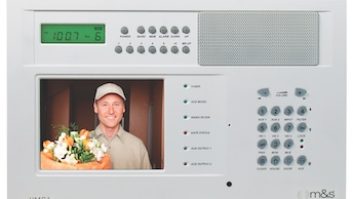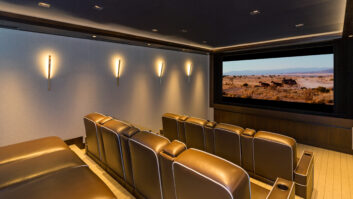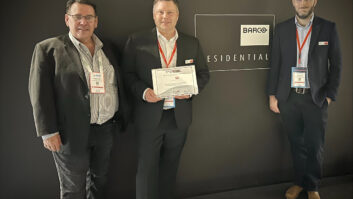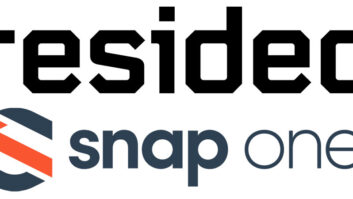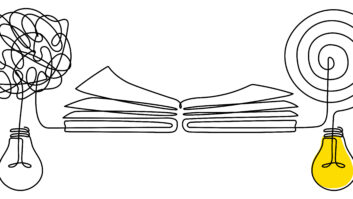
I’ve had better Thursdays. I ended up at a Home Depot scouring the shelves looking for nail-on boxes for one of our installation crews. Earlier in the day I interrupted a frenzied interaction between two of our employees looking for parts that hadn’t shown up but should’ve. If you run an integration business, I suspect you’re nodding knowingly right now. Here we were, a supposedly buttoned-up outfit, running around like chickens with our heads cut off. What could we learn from this to make next time go better? Leave it to one of CEDIA’s finest, Peter Aylett, to label it properly: “Panic In Private.”
I’m obsessed with making things better in any part of my life. If I’m running, how could I run faster next time? When flying, I’m always trying to improve my landings. You get the idea. When it comes to business, I think about our installation and service delivery like a NASCAR pit crew. There’s no such thing as the perfect installation and always room for improvement. Aylett’s concept of “Panic In Private” is all about being proactive vs. reactive. I love the phrase, “We never have time to do it right the first time, but there always seems to be time to fix it.” Panicking in private starts way before the installation — back at the sales/design phase. I’ve come up with a few ways we can improve internally, and I hope you’ll share yours in the comments on LinkedIn as well.
Also by Henry Clifford: 10 Ways to Revitalize Your Business
Design and Engineering
Are your sales reps writing their own proposals? Do you have a dedicated system designer? Do you have an internal review process to make sure a second set of eyes reviews large custom scopes of work? Is your system designer an order taker, or does she push back when appropriate, alerting your sales team to potential design issues well before anything gets sold? This is the biggest area of opportunity for panicking in private, because each finished job should ideally communicate engineering issues back to the system designer to prevent the same mistakes from happening twice. Too often we’ll see small details overlooked during the design and engineering process that can lead to big issues down the road. If you’re writing your own proposals or can’t justify the expense of an in-house system designer, consider hiring an outfit like BlueDog Group to write them for you. We’ve been using a combination of in-house designer and BlueDog Group for the last five years, and the results speak for themselves. Our installers are much happier with solid system design and great documentation, not to mention the customer satisfaction around having things work properly the first time.
Rack and Test at the Shop
I visited AUDIOVISIONS in Lake Forest, CA, a few years back and was really impressed with their warehouse racking, testing, and staging facility. I wanted to build the same thing at Livewire. We ended up creating something similar, but details got in the way such as our guys not being able to easily transport large racks after they were already built. The end result was we went back to doing a lot of assembly and testing in the field. I challenged our logistics manager to re-think the way we’re scheduling installations. Why not make the first day of a finish out at the shop where our guys can connect the systems together, program them, and make sure it all works before taking them out to the field? How much easier would it be to discover a broken TV or driver issue at our shop vs. the field? We’re going to pick a few jobs out in the next few months to try this out. It’s not a silver-bullet strategy. It makes no sense to pre-game something that’s very simple, so it might take us a few months to figure out the sweet spot. Rest assured we will figure out how to better “Panic In Private” at the shop before the end of 2020.
Also by Henry Clifford: The Finish Line — Ways to Increase Value
Checklists
Checklists are like dental floss. We can all agree that flossing is good for you and should be done twice a day. What will happen to us if we don’t? Maybe nothing. In other words, checklists are a vitamin vs. a medication. The only time in my life checklists have seared themselves into my consciousness has been during my aviation training. Why? If you don’t follow checklists during flight, you die. Very simple. How do we better incent the use of checklists with our employees? It’s maddening and hard to manage. We need an environment where our folks see the value of the checklists and want to use them vs. have to use them. We’re going to do a better job of connecting checklists to successful outcomes in one of our upcoming Rapid Improvement Plans that funds a shared incentive program for all employees. Will money be enough of an incentive to use checklists? I don’t know, but we’re going to keep trying until we figure out the secret sauce.
Don’t get me wrong, we have an amazing team and they get it right 95 percent of the time. We’re always trying to improve on that last 5 percent (aren’t we all?). Striving for constant improvement shouldn’t be an indictment of the status quo, it’s axiomatic. It just is. We choose to always push for better performance because the alternative is inertia, and that’s where businesses go to die.
What are you doing to “Panic In Private” inside your company?
Stay frosty, and see you in the field.
